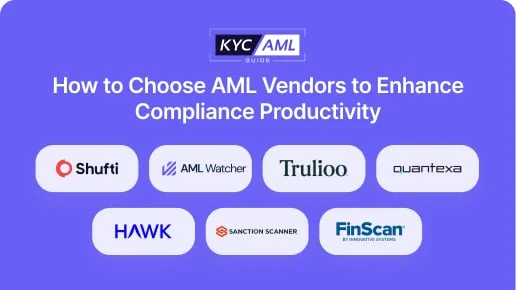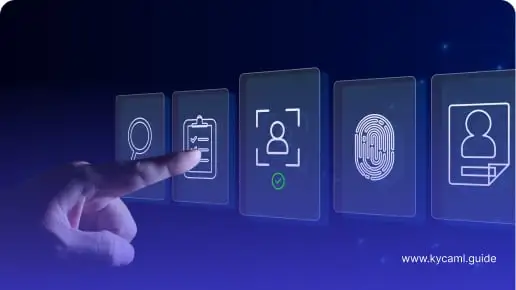Digitization of the KYC (Know Your Customer) has its benefits and drawbacks. Recently, banks in established countries have become fully focused on introducing seamless and paperless KYC. For this purpose, they have introduced the Bank Video KYC.
What is Video KYC?
It is a seamless process in which the customer’s identity verification is done through smartphones via online video calls. Currently, it is one of the most trending and in-practice types of KYC. Mostly, a KYC agent facilitates the customer to conduct Video KYC. Financial Institutions and banks use it for facilitating customers and speeding up the KYC process before their services are rendered. Likewise, Bank Video KYC facilitates banks in remote customer onboarding without the requirement of a customer’s physical presence.
Video KYC Process Explained
Initially, the customer needs to connect to the company via video call. Then, a company after having the initial CIP (Customer Identification Program) online, will assign an agent to the customer. A detailed chart of the Video KYC process is given below:

Furthermore, the following points explain the process of video call-based KYC is as follows:
- An agent of the bank’s representative initiates a video call to the customer.
- Once the customer gives his consent, a video call is carried out.
- Meanwhile, the customer also submits the initial documentation online by filling out a form.
- This form has the Basic details required by banks from the customer. These include Name, Date of Birth, and Address.
- The agent then asks the customer to display the verification documentation in the video call. Also, the customer needs to be present in the video call in front of the camera.
- The customer must not be wearing any mask and his face must be completely visible in the video call.
- The AI-based KYC tools then record the face of the customer through liveness detection and facial recognition. Also, the location is confirmed via geo-tagging.
- Likewise, other data is recorded via video call through the camera. Also, the customer needs to display the documents.
- Agents verify the customer information through a validation process. They carry out the questioning with the customer to cross-verify and match the customer’s information.
- Once the customer’s onboarding is complete, a backup of the customer’s KYC profile is created in a centralized database. Mostly, this database is stored in an emerging technology called Blockchain.
- Finally, the agent formally ends the video call and welcomes the customer for services.
Benefits of Video KYC
Leveraging Video Technology for customer onboarding has revolutionized the way businesses interact with and verify their clients, offering numerous benefits and advantages. Here are a few benefits of Video-Base KYC.
| Remote Customer Onboarding | Enables customers to be onboarded from any location without visiting a physical branch, providing greater convenience. |
| Reduced Fraud | The real-time video interaction confirms the genuine person’s identity and reduces the chance of identity theft. |
| Digital Records | The entire Video KYC process can be easily recorded and kept for future reference, audits, and further verification. |
| Eco-Friendly | Due to the reduced paperwork, Video KYC is more environmentally sustainable. |
| Integration with Emerging Technologies | Video KYC platforms can easily integrate with facial recognition, AI, and Machine Learning to enhance the user experience and accuracy. |
| Time and Cost Saving | There is no need to visit the branch and spend resources and time signing up for the services of a bank. Video KYC can be done from anywhere saving you cost and time. |
Drawbacks of Video KYC
| Lack of Global Acceptance | Video KYC is accepted in a limited number of jurisdictions which constrains its global acceptability. |
| Limited Verification Authenticity | Even after real-time video, there are high chances of Deepfakes and Identity theft due to evolving technologies and their availability to everyone. |
| Data Security Concerns | Personal Identifiable Information transmitted through video poses a serious security risk. |
| User-Tech Savvy | Customers unfamiliar with Video KYC can find it difficult to navigate through the process which may lead to potential discomfort while onboarding. |
| Setup Cost | Setting up or shifting the manual KYC to digital technology has its costs. It can be out of the budget of a small or medium-sized organization. |
| Technical Issues | Poor Internet connectivity, glitches in Mobile apps, and hardware limitations can hamper the KYC process through video calls. |
Furthermore, three problems persist in the Video KYC verification procedure. These are:
- The wrong Country or Geo-location selected
- Different Document for ID is uploaded
- Unmatched details are filled in where real ID Documents have different data.
To resolve these problems, Video KYC is done via 2 approaches:
- Video Interview KYC
- Automatic Video Capture
1) What is Video Interview KYC?
Video Interview KYC works exactly like a traditional Interview KYC with the difference of being conducted online via video call. A KYC agent facilitates the Video Interview KYC for customer onboarding. In this process, the entire customer onboarding is carried out in an interview session between the customer and the service provider.
2) What is Automatic Video Capture?
Video KYC also enables the service provider to capture the video of the entire onboarding session or just the key moments and instances. This can be done automatically via process automation. The audio and video recordings of automatic video capture can be used for verification under different circumstances. Liveness Detection, signs of coercion or voice tampering or even differentiating between AI-generated and original video.
How Does Video KYC Help in Detecting Criminal Activities?
There are 3 ways in which Remote Video Customer Onboarding KYC helps in detecting crimes like fraud, money laundering & other illicit financial activities:
| Spoofing Attacks |
|
| Synthetic Identities |
|
| Deep Fakes |
|
Video KYC Bank Account Opening
Almost, every country is concerned about making the KYC process seamless. Notably, India has made some strong moves in introducing Video KYC. The Reserve Bank of India approved KYC through Video Call for opening a bank account in May 2021. Similarly, all financial institutions now realize the importance of KYC through Video calls. It improves the security and compliance measures for the customers. Furthermore, its benefits include cost-efficiency and a time-saving approach compared to the traditional KYC process.
Video KYC in Different Countries
| Country | Regulatory Body | Relevant Information |
| India | SEBI (Security Exchange Board of India) |
|
| Germany | BaFin (Federal Financial Supervisory Authority) |
|
| Switzerland | FINMA |
|
| Spain | SEPBLAC (The Executive Service of the Commission for the Prevention of Money Laundering and Monetary Offenses) |
|
| Portugal | Multiple Regulatory bodies |
|
Moreover, Banks and regulatory bodies highly benefit from Video KYC. Especially, when it comes to implementing AML regulations, it is easy to identify fraudsters and Money Launderers. The customers are only required to conduct their KYC through video calls, so there are chances of a security breach. However, regulators are well aware of the threats in this case. Hence, Ongoing monitoring is required to keep the system safe and the database updated with the latest lists and identities.
Conclusion
Overall, Video KYC is one of the emerging technologies that is growing rapidly. Banks, Financial Institutions, and other entities are increasingly embracing it. Now, Smartphone Applications are introducing KYC through Video Calls for remotely verifying the customer’s identity and expanding their services. Particularly, Video-based KYC has become popular due to being convenient. KYC Solution providers now focus on leveraging this emerging technology and integration with AI, Blockchain, and Machine Learning to enhance the customer onboarding experience.
Lastly, KYC systems have now improved by embracing technology like Video KYC and other forms of Digital KYC. Now, banks can recognize a customer and have clear procedures for KYC and AML compliance.
KYC AML Guide can navigate your choice of KYC Vendor to save you from hefty penalties and costs of poor to no compliance. Explore how we can add value to your business by helping you with wise KYC Technology Buying decisions.





